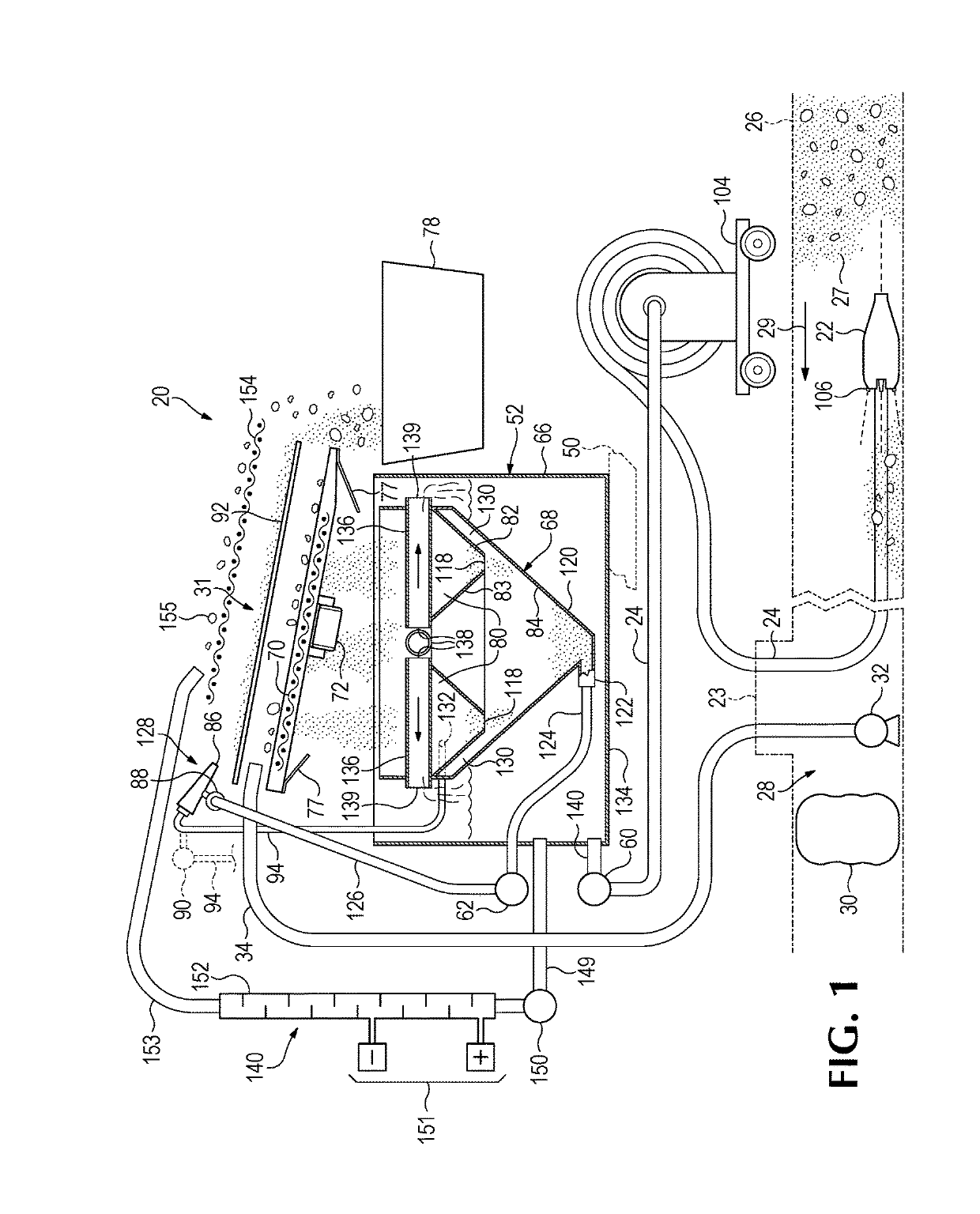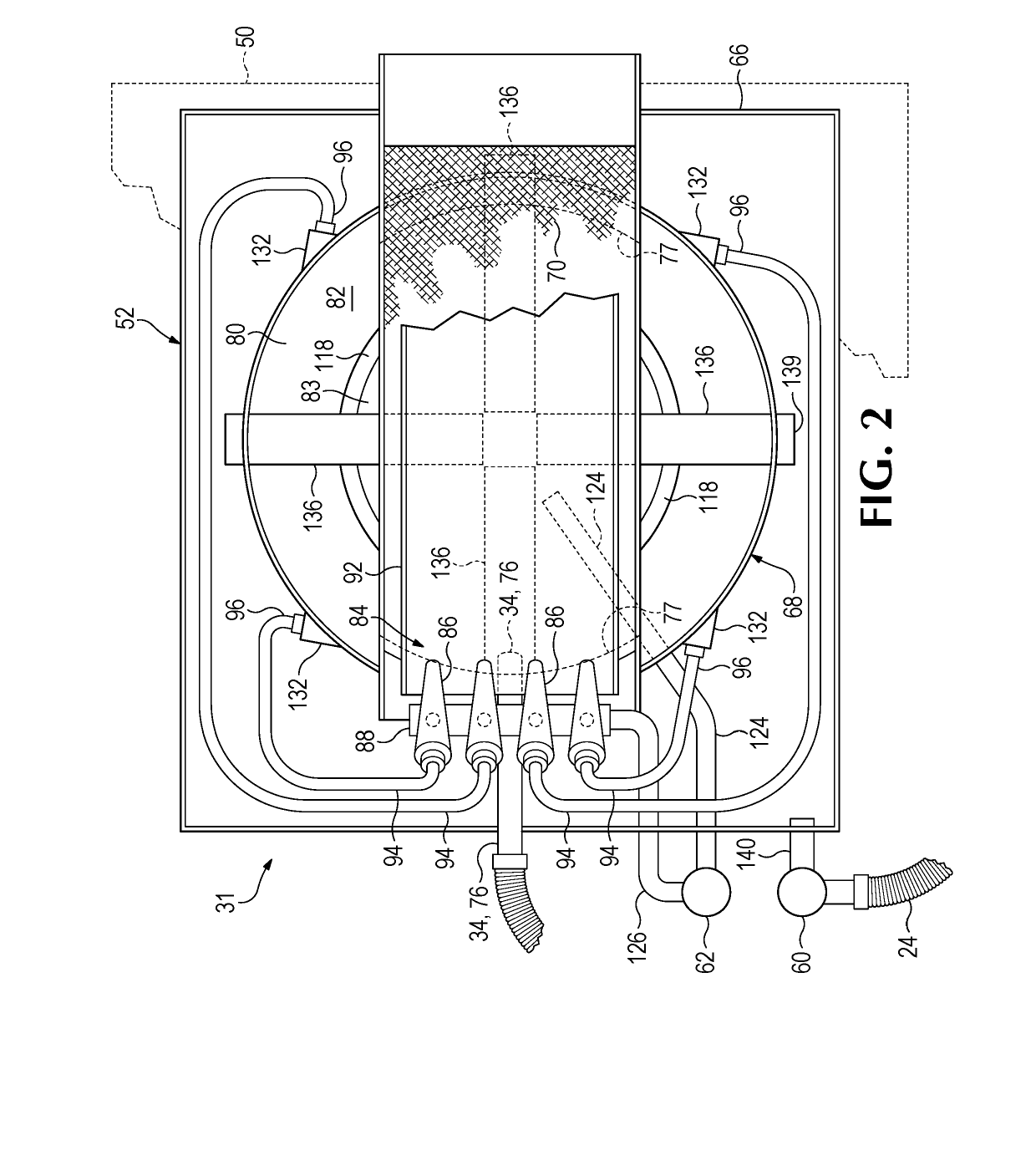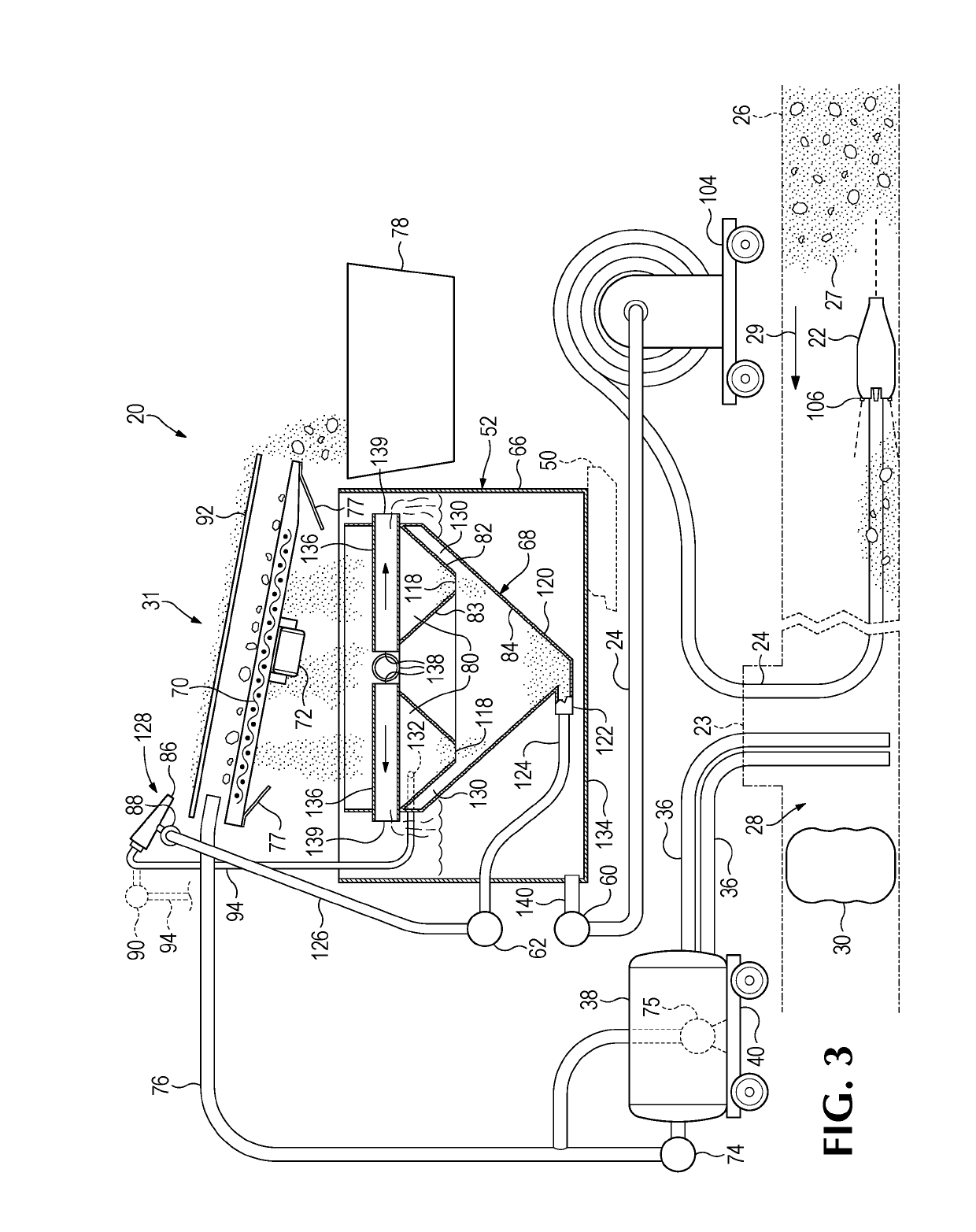Method and apparatus for cleaning large pipes, such as storm drain conduits
a technology for storm drain conduits and cleaning methods, applied in the direction of filtration separation, cleaning using liquids, separation processes, etc., can solve the problems of ineffective storm drain conduits, high cost of hauling clean water to storm drain conduit cleaning sites, and significant materials removed from storm drain conduits. , to achieve the effect of increasing specific gravity, increasing viscosity, and increasing viscosity
- Summary
- Abstract
- Description
- Claims
- Application Information
AI Technical Summary
Benefits of technology
Problems solved by technology
Method used
Image
Examples
Embodiment Construction
[0024]Referring now to the drawings that form a part of the disclosure herein, a storm drain conduit cleaning system 20 shown in FIG. 1 utilizes a high-volume flow of water from a nozzle assembly 22 fed by a nozzle assembly feed hose 24. The nozzle assembly 22 may be introduced, through an access point such as a manhole 23, into a storm drain conduit 26 or similar conduit at a downstream end 28 of a length of the storm drain conduit 26 to be cleaned. A high-volume flow of water is discharged from the nozzle assembly 22 to break up and loosen accumulated sediment 27 and flush loosened sediment downstream through the storm drain conduit 26, in the direction of the arrow 29, toward the downstream end 28 of the length of storm drain conduit being cleaned.
[0025]A barrier 30 such as an inflatable body may be installed below the downstream end 28 of the segment to be cleaned, to block the downstream end of the segment and prevent water and entrained matter from proceeding further downstrea...
PUM
| Property | Measurement | Unit |
|---|---|---|
| pressure | aaaaa | aaaaa |
| specific gravity | aaaaa | aaaaa |
| exit velocity | aaaaa | aaaaa |
Abstract
Description
Claims
Application Information
 Login to View More
Login to View More - R&D
- Intellectual Property
- Life Sciences
- Materials
- Tech Scout
- Unparalleled Data Quality
- Higher Quality Content
- 60% Fewer Hallucinations
Browse by: Latest US Patents, China's latest patents, Technical Efficacy Thesaurus, Application Domain, Technology Topic, Popular Technical Reports.
© 2025 PatSnap. All rights reserved.Legal|Privacy policy|Modern Slavery Act Transparency Statement|Sitemap|About US| Contact US: help@patsnap.com



